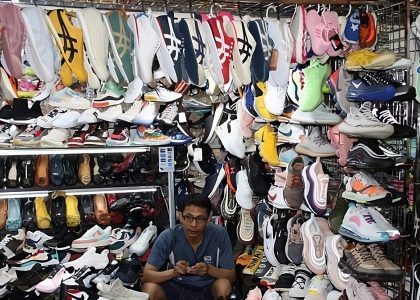Cosmetic Replicates: History, Effects and Solution
Start of Counterfeit in Cosmetics and how it can be curbed.
Cosmetic Counterfeits have been a recurring issue in the industry. It has been spreading since cosmetics came into existence. Earlier there was no proper definition to cosmetics, as long as they made you look perfect. Neither the components of these cosmetics were known nor their side-effects.
One such example was Queen Elizabeth First of England. Beauty standards were extremely high as well as unbearable at that time that resulted in women using more and more cosmetics with unknown components. Queen Elizabeth First maintained the highest standards of beauty possible. She used porcelain white powder to make the skin look as white as possible, which confirmed with the standards at that time. She would repeatedly use thick layers of the powder paste on the skin. This caused skin irritation and break-outs but she endured it. This porcelain powder made the skin look flaky and introduced various skin problems, which lead the Queen to apply thicker layers of the powder. This in-turn made her sick and sicker with time. The official documents have told Sepsis to be the cause of death of the Queen, but it is believed that she died due to excessive mercury poisoning caused by the cosmetics she was using. Even if we consider it as a rumour the cosmetics with the wrong kind of elements can result in skin irritation, reactions, skin cancer and on an elevated level such fatal scenarios. These types of incident lead people to understand the importance of knowing what you are applying on your skin.
LOSING REVENUE TO COUNTERFEIT?
Protect your Customers from Counterfeit Products
In Clothing Industry, Counterfeit product sales depend on the brand’s PCC(Perceived Corporate Citizenship). Bigger the brand in terms of customer loyalty, lesser profit to people counterfeiting their brands. However this is different in case of the Cosmetic industry as bigger the brand is, the cost of its product is higher, more counterfeit of the same product in the market is present. The production of counterfeits also depends on the availability of the products in certain areas. The counterfeit market flourishes in areas where these brands cannot be delivered. This becomes an added advantage for the replicate sales as in these countries there is no consumer base.
Cosmetic Brands even have customer protection programs in order to determine the source of counterfeit as well as protect their brand from bad publicity. This has not been successful however, because it is impossible to check for counterfeit all around the world due to the tedious processes as well as no predefined procedure deployed by these brands. There is a need for a solution that would track duplicates as well as gives information where the counterfeit products are being sold.
Earlier this was a complex problem to solve as people were trying to solve it by the use of technologies that generate unique codes like QR Codes, RFID, NFCs. But these technologies itself are cloneable. And we may get where these codes were scanned by third-party software although we don’t get an exact location. However, NOOS Technologies has been building a robust solution that gives the exact location wherever the genuine or counterfeit product was scanned. This is provided in the form of a printable label named SCoT which is non-clonable and gives real-time access to all this data.
Many solutions have been used in this particular space but they were not a final solution.
SCoT is an integrated solution for cosmetic counterfeits.
For more details, Contact us: info@noostehnologies.com




